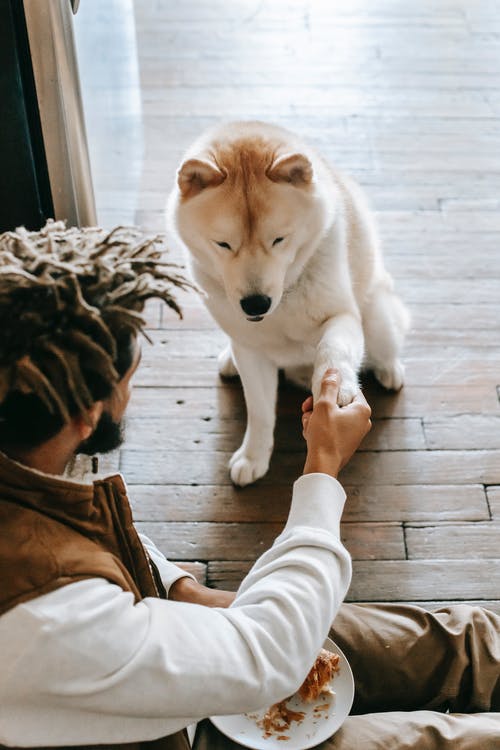Dogs are the best companion you could ever have. However, owning a dog requires special care and a lot of patience. This is true, especially in teaching dogs to use the toilet when they need to poop or pee. It would be a mess if house dogs do not undergo toilet training, and this might also stress you out.
What is Toilet Training?
Toilet training, so-called potty training, is not new for pets. It is an effective way to establish a good habit for your pet. Some dog owners are really in trouble today because they missed out on this stage.
Potty training could be done with puppies or older dogs if not given a chance in the early stages. However, experts suggest starting training dogs while they are young, as adult dogs can learn instructions at a slower pace.
This dog training can also be a good opportunity to bond with your pet. It must catch your dog’s attention, so make it more entertaining.
Signs That Dogs Need To Go To The Toilet
Though dogs are smart pets, it would be a hassle to know how they feel. Hence, the following signs will help you better understand your dog in need of a toilet break:
Shifting Activities
Dogs easily get distracted when they need to potty. However, that is not always the case. Sometimes dogs change activities because they are just bored or want to cuddle.
One great sign of a potty need is when your pet is busy playing, but unexpectedly, moves in a corner. There will be a sign of uneasiness when a dog has that strong urge to use the toilet.
Sniffing
Dogs use their nose to find a place to pee or poop. It is usually the same spot where they pee or poop before. Therefore, if you find your pet sniffing the floor, there is a great chance of a potty need.
Cleaning the soiled area with the right products is vital to prevent giving hints to the pet about where to pee or poop. Do not forget to praise your dog after going to the proper potty area.
Circling
Though sniffing is a good sign of a dog looking for a toilet, it could be misleading too. Your pet might be hunting for food unless it starts circling. It is natural for dogs to turn in circles when they need to poop. Immediately take the pet outside and give it a reward.
Whining
This sign is common for puppies. If the whining is nonstop, the pet might want to go to the toilet. But, keep in mind that a whining dog can mean different things, such as feeling hungry or in pain. Do not ignore your pet to avoid messing up your home.
Barking
Here is another unclear sign that a dog needs to potty. Of course, dogs bark every time they see strangers. If it barks while standing in the front door, this might be telling you that your pet ought to go out. A dog will also scratch the door when the potty need is really bad.
Step-by-Step Toilet Training For Dogs
After seeing signs of whether a dog needs to go to the bathroom, the next steps for potty training include:
1. Find a Potty Area
Have a particular place for your dog to leave its waste. The surface must be made of substrates, like paper, gravel, or grass. This is to avoid messing up the pet house.
2. Set Toilet Breaks
Training a puppy requires proper supervision to see progress. It is best to fix a toilet break schedule for the first few weeks to introduce the routine. Continue the process until it establishes a good habit making the dog more responsible in using the toilet.
3. Use Commands
Deliver short commands to your dog, like “be quick”, during the training. Avoid shouting not to trigger fear.
4. Give a Reward
When the dog follows your command, praise the pet with words and treats. Positive reinforcement is much better for dogs of all ages. It will result in a more likable behavior compared to hitting the pet every time it has done wrong. Thus, patience is important during the training process.
Another type of reward is playing with the dog after going to its restroom. It should only last for a few minutes.
Using Crate for Potty Training
A crate can help both puppies and adult dogs under potty training. It must be utilized not as a means of punishing the pet, but for supervision purposes. The crate material should offer enough room for the pet to move around and to serve as a temporary shelter during the training.
Observe whether the dog is showing signs of anxiety during its stay in the crate and talk to the vet instantly.
Final Thoughts
Leaving dogs alone makes it harder to monitor their potty behavior. That is why homeowners should teach dogs how to pee or poop in the right places with the methods above. Hiring a professional dog trainer could help to develop the best possible behaviors among your dogs. It has all the techniques for dogs to obey a command in any situation. The training process will be fun and it won’t use negative reinforcement to hurt dogs. Surely, your pet will be in good hands.
Visit https://joyfuldogs.co.uk to see other dog training services. Leave them a message for your inquiries.

